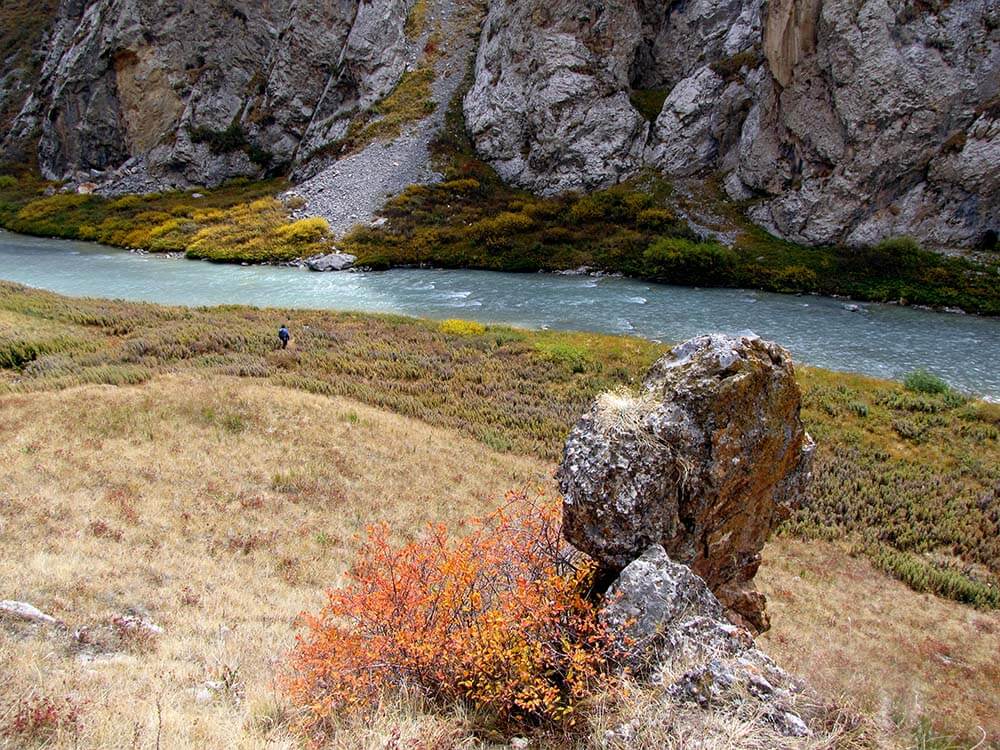Traditional entomological expedition to the Southern Tien Shan (Kyrgyzstan)
Most of the Southern Tien Shan, which is occupied by Kyrgyzstan, was closed to visitors during the Soviet Union. Tourists, scientists and ordinary residents could not enter here. There were only border guards here. The vast territory had long been alienated from the rest of the empire, more than 100 km inland. This played a positive role in the fact that these places have remained wild, pristine, unknown and inaccessible to this day. In this regard, these places still remain little known and unexplored. These circumstances create a good chance for new research and discoveries in the field of entomology and zoology in general.
Therefore, we invite scientists and researchers to take part in an entomological expedition to the northern foothills of the Kokshaal-Too mountain range. Kakshaal-Too is one of the powerful ridges of the Tien Shan, which serves as an impregnable natural border with China. Kokshaal-Too is the last mountain barrier on the path of moist air currents bringing moisture to the Tien Shan. To the south of the Kokshaal-Too mountain range, the Tarim Platform extends with the Taklamakan Desert. Kokshaal-Too is characterized by harsh natural conditions, cold winters and short summers. The average altitude of the foothill zone is more than 3500 m above sea level. mind.
The landscape here is amazingly majestic, combining deep canyons, lakes, glaciers, wide river valleys and alpine meadows. The mountain ranges are composed of limestone rocks of Devonian and Carboniferous age. The canyons hide many unexplored grottoes and caves. In one of the narrow canyons there is a fantastically beautiful lake Kel-Suu, which periodically completely disappears through underground channels. It is possible that the disappearance of the lake is related to climatic conditions.
Local shepherds tending herds of yaks said that they found fresh traces of a bear at the entrance of one of the large caves located near the lake. When the shepherds leave their camps at the end of September, they meet various animals in the mountains: Argali (Ovis ammon), Snow Leopard (Uncia uncia) and others.
This expedition will last 10 days. The most favorable time for the expedition is July-August. During this period of the year, the rivers have a minimum water level, which creates good conditions for crossing the rivers. For the expedition we obtain all the necessary official permits.
EXPEDITION PROGRAM
Day 1. Arrival in Bishkek
Briefing, discussion of expedition plans. Overview of the study area. Meet local entomological experts. Overnight in a hotel, 4*.
Day 2. Bishkek – Naryn – Kel-Suu (Kokshaal-Too)
Today we will find ourselves in the Alpine belt. Our route will take about 550 km to the south. We must reach the first base camp near Lake Kel-Suu at an altitude of more than 3700 m. Overnight in tents.
Days 3-4. Research in the vicinity of Lake Kol-Suu
This area is wild, untouched pristine nature. There is no telephone connection here. For long radial rides, those interested can rent a horse from local shepherds. To cross the lake we have an inflatable rubber boat.
Days 5-6. Research in the Kok-Kiya canyons
The canyons are relatively inaccessible. The Kok-Kiya River flows at the bottom of the canyons. Its aesthetically beautiful numerous meanders formed a magnificent landscape. Inside the canyon, its own microclimate is preserved. The sun peeks into the canyon less often than in the surrounding area. Tall, varied grass and various shrubs grow here. These places are wild and untouched, so it is possible to encounter wild animals here.
Day 7. Kok-Kiya – Naryn – Kadzhi-Sai
We are leaving the high mountain zone. Our path lies in the Issyk-Kul depression. Lake Issyk-Kul is the second largest alpine lake in the world. In the city of Kadzhi-Sai we will have rest, discuss the results of the expedition, and exchange impressions. Overnight at a hotel on the lake shore.
Day 8. Kaji-Sai – Borskoon
Insect research on the southern coast of the Lake. Trip to Borskoon gorge.
Day 9. Kadzhi-Sai – Dzhuka Gorge
The gorges and the valley of Issyk-Kul are different from each other. Each gorge has its own microclimate and natural conditions.
Day 10. Return to Bishkek
On this day we return to Bishkek. Overnight at the hotel.
Cost of the program on request
Included in the price:
- – Meeting and seeing off at the airport,
– Accommodation in 4* hotels according to the program (double/double rooms),
– Tents for accommodation,
– Large tent for kitchen and dining area,
– Tent for laboratory and warehouse,
– Food,
– Off-road transport,
– Expert guide,
– Cook
– Entrance fees to nature reserves,
– Permits for collecting biomaterial,
– Permits for the export of material,
– Equipment for field camp
The price does not include:
- – Cost of international air travel to Bishkek and back,
– Equipment rental,
– Supplement for single occupancy,
– Cost of visa and consular services,
– Personal expenses in the hotel: bar, international calls,
– Insurance









